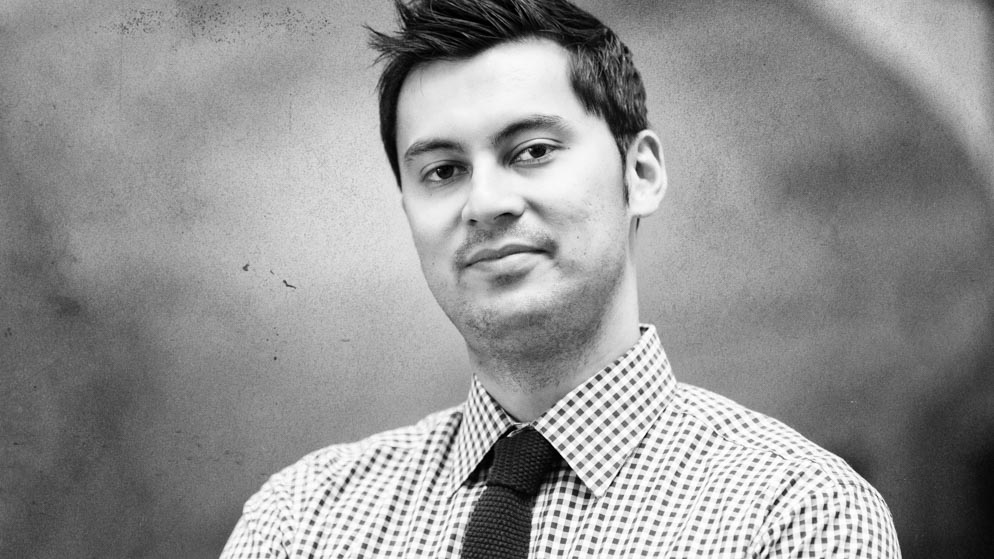
Where exercise and its effects on prostate cancer are concerned, Program Head of Kinesiology, Dr. Daniel Santa Mina, sums up the field of study in two words: “Very new.”
2003 saw the first paper published on the subject; since then, a growing body of literature, commonly showing some benefit.
Then – a landmark finding published in the Journal of Clinical Oncology in December 2011, showing first evidence of increased survival because of exercise. The study found that vigorous physical activity – vigorous being the key – could help lower the risk of death from prostate cancer by as much as 60%.
A strong statistic, which Dr. Santa Mina follows up with a strong claim: “The biggest benefit of exercise may not, in fact, lie in survival.”
He continues: “In many cases, prostate cancer treatments leave men feeling incapacitated and distressed – in other words, incapable of doing vigorous physical activity.”
“More importantly, I believe the benefits of exercise lie in its effects on quality of life. It makes men with prostate cancer feel better,” he says, thereby supporting the growing body of evidence that states the same.
Distress associated with cancer treatments
Treatments associated with prostate cancer – surgery, radiation, and hormone therapy – often leave men impaired in ways they were not prior to treatment. This often leads to further distress, anxiety and depression, ultimately impacting quality of life.
“Cancer affects people in ways beyond just the disease, and beyond just survival. To not address the fact that men feel unwell after treatment doesn’t consider the entire person,” says Dr. Santa Mina.

An incredible amount of research today shows that exercise unequivocally benefits just about every facet of quality of life.
“If we can help someone climb a flight of stairs or carry in the groceries… then this should merit some attention.”
And recently, it seems it has.
WE-Can
The city of Toronto now has its first clinically-integrated exercise program for cancer survivors at the Princess Margaret Cancer Centre, led by Dr. Santa Mina.
This marks a significant shift in cancer treatment, as the program clinically integrates exercise into a patient’s spectrum of care.
The Wellness & Exercise for Cancer Survivors program (WE-Can) is now available to prostate and breast cancer patients at the Princess Margaret, with the goal to expand to all other cancer types. Patients are seen by a team of people who specialize in oncology and rehabilitation: radiation oncologists, kinesiologists, geriatricians, cardiologists, physiotherapists, patient advocates and educators, exercise physiologists.
“Considering the level of individualization needed for every person, you need everybody in that room. This ensures we’re able to consider everything to deliver a safe and effective exercise program.”
The clinical and research parts of the program work in conjunction, and include fitness assessments with a home-based exercise program. Patients are sent home with videos and manuals, they’re given equipment like exercise balls, mats and stretch bands. There are follow-ups in the short and long term to look at things like survival advantage, disease progression, and disease recurrence.
“When we started this in 2007 – this was my goal,” says Dr. Santa Mina.
The Movember Global Action Plan
Dr. Santa Mina and his team have been granted about $3-million in research-related funding for this new program. Prostate Cancer Canada, the Canadian Breast Cancer Foundation, the Canadian Institutes of Health Research, the Princess Margaret Hospital Foundation, and the University of Guelph-Humber have all contributed.
Funders of a global project are also contributing. The Movember Global Action Plan – which looks at prostate cancer, exercise and metabolic health - have committed $8.8-million AUD to this initiative, and will include research in Toronto at WE-Can.
“A lot’s happened in seven years,” says Dr. Santa Mina, enthusiastically.
“Imagine walking into a cancer centre, and seeing men and women on a treadmill, walking, lifting weights, dancing. Cancer patients can have a lot of life to live. We want to optimize that time, and exercise is the best at doing that when it’s a part of other treatments.”
“What we’re doing is changing the system. We’re changing the face of cancer treatment so that more people can return to a quality of life they enjoyed pre-cancer.”

